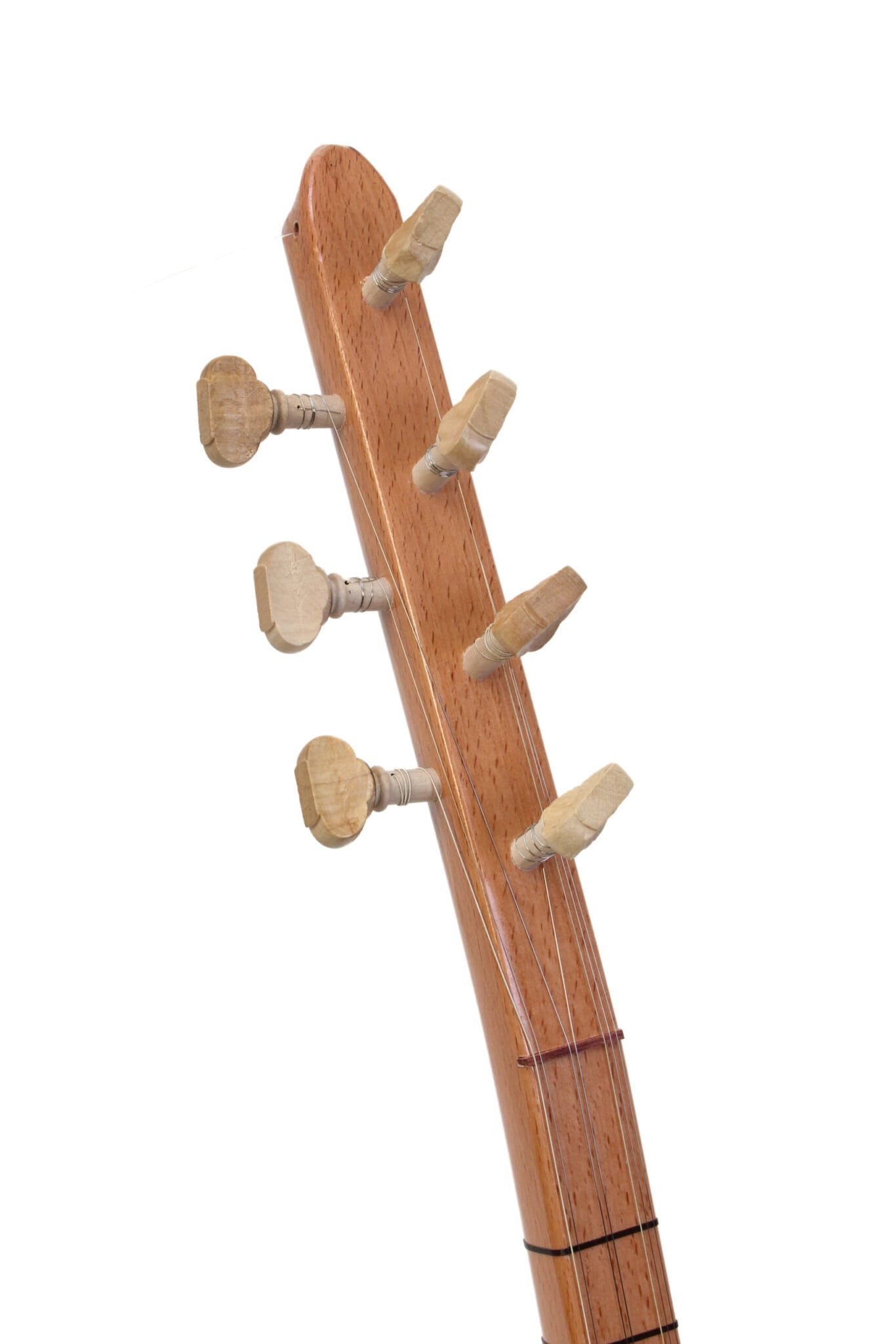Crafting the Turkish Long Neck Saz: A Labor of Love
The Turkish long neck saz, also known as “baglama,” is not just a musical instrument; it’s a piece of artistry and cultural heritage that has been meticulously crafted for centuries. From the careful selection of materials to the skilled hands of master craftsmen, every step in the creation of a saz reflects a deep respect for tradition and a dedication to excellence.
Selection of Materials: Crafting a Turkish long neck saz begins with the careful selection of materials. The body of the saz is traditionally made from aged wood, such as mulberry, walnut, or juniper, chosen for its resonance and durability. The neck and pegbox are crafted from similar hardwoods, ensuring strength and stability. The choice of materials is crucial, as it directly influences the sound and playability of the instrument.
Carving and Shaping: Once the materials have been selected, the process of carving and shaping begins. Master craftsmen use a combination of hand tools and precision machinery to shape the body, neck, and pegbox of the saz. Every curve and contour is meticulously crafted to enhance the instrument’s acoustic properties and aesthetic appeal. Attention to detail is paramount, as even the smallest imperfection can affect the instrument’s sound quality.
Assembly and Fitting: After the individual components have been carved and shaped, they are carefully assembled and fitted together. The neck is attached to the body, and the pegbox is affixed to the top, creating a seamless connection between the different parts of the saz. Traditional joinery techniques, such as mortise and tenon joints, are often used to ensure a strong and stable bond.
Decoration and Ornamentation: Once the basic structure of the saz is complete, attention turns to decoration and ornamentation. Elaborate inlay work, often featuring intricate geometric patterns or floral motifs, adorns the body and neck of the instrument. Mother-of-pearl, bone, and precious metals are commonly used in these decorative elements, adding a touch of elegance and sophistication to the finished saz.
Finishing and Final Adjustments: The final stages of saz crafting involve applying a protective finish to the instrument and making any necessary adjustments to ensure optimal playability. The saz is meticulously sanded and polished to achieve a smooth, lustrous surface, enhancing its visual appeal. Strings are carefully installed, and the instrument is tuned and tested to ensure that it meets the highest standards of quality and craftsmanship.
In conclusion, crafting a Turkish long neck saz is a labor of love that requires skill, patience, and a deep understanding of tradition. From the selection of materials to the finishing touches, every step in the process reflects a commitment to preserving the rich heritage of Turkish music and craftsmanship. The result is not just a musical instrument but a masterpiece that embodies centuries of tradition and artistry.












Reviews
There are no reviews yet.